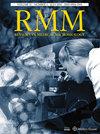依拉瓦环素抗菌活性的系统综述:一种新型氟环素抗临床获得的革兰氏阴性菌
Q3 Medicine
引用次数: 2
摘要
Eravacycline (TP-434或7-fluoro-9-pyrrolidinoacetamido-6-demethyl-6-deoxytetracycline)是一种新型氟环素抗生素,旨在克服四环素特异性耐药机制。本研究旨在分析已发表文献中厄伐环素对革兰氏阴性菌的体外活性,为抗菌药物管理计划提供国际数据。通过2000年1月至2017年12月的电子数据库进行系统的文献综述,涵盖与我们研究范围相关的所有已发表的文章。最后,9项研究符合我们的纳入标准,并进行了数据提取和回顾。依瓦环素对大肠杆菌的活性最高,因为在所有报告中,依瓦环素浓度为0.5 mg/ml或更低时对90%的菌株有抑制作用。相比之下,对蛋白酶分离株的活性最低,因为除了一篇报道外,浓度至少为2 mg/ml的依伐环素抑制了90%的分离株。结果表明,厄伐环素对含1057株碳青霉烯耐药菌的13个菌群的抑菌活性表明,厄伐环素浓度≤2 mg/ml时对90%的菌株有抑制作用。唯一的例外是碳青霉烯抗性Proteeae, 90%的分离株在至少4 mg/ml的浓度下被抑制。综上所述,依拉瓦环素对几种医院病原菌具有良好的体外抗菌性能。这是一个令人鼓舞的结果,为治疗革兰氏阴性菌引起的感染提供了一种选择,无论耐药表型如何。然而,需要进一步的临床研究来提供临床证据来支持这些观察结果。版权所有2019威科健康有限公司版权所有。本文章由计算机程序翻译,如有差异,请以英文原文为准。
Systematic review of antibacterial activity of eravacycline: a novel fluorocycline against clinically obtained Gram-negative bacteria
ISSN Eravacycline (TP-434 or 7-fluoro-9-pyrrolidinoacetamido-6-demethyl-6-deoxytetracycline) is a novel fluorocycline antibiotic, which was designed to overcome tetracyclinespecific resistance mechanisms. This study aimed to analyze the in-vitro activity of eravacycline against Gram-negative bacteria in published literature, to contribute to the international data on the antimicrobial stewardship programs. A systematic literature review was performed through the electronic databases from January of 2000 to December 2017 to cover all published articles relevant to our scope. Finally, nine studies met our inclusion criteria that were subjected to data extraction and review. The highest activity of eravacycline was against Escherichia coli isolates since in all reports eravacycline at a concentration of 0.5 mg/ml or less inhibited 90% of isolates. In contrast, the lowest activity was seen against Proteeae isolates since except for one report eravacycline at a concentration of at least 2 mg/ml inhibited 90% of isolates. The antibacterial activity of eravacycline against 13 collections of carbapenem-resistant bacteria consists of 1057 isolates was showed that eravacycline at a concentration of 2 mg/ml or less inhibited 90% of isolates. The only exception was for carbapenemresistant Proteeae which 90% of isolates were inhibited at a concentration of at least 4 mg/ml. In summary, eravacycline has a promising in-vitro antibacterial property against several nosocomial pathogens. This was an encouraging result that provides an option for treatment of infections caused by Gram-negative bacteria, regardless of resistance phenotype. However, further clinical studies are necessitate to provide clinical evidence to support these observations. Copyright 2019 Wolters Kluwer Health, Inc. All rights reserved.
求助全文
通过发布文献求助,成功后即可免费获取论文全文。
去求助
来源期刊

Reviews in Medical Microbiology
生物-微生物学
CiteScore
1.80
自引率
0.00%
发文量
0
审稿时长
>12 weeks
期刊介绍:
Reviews in Medical Microbiology is a quarterly review journal which provides a balanced coverage of the whole field of medical microbiology. The Journal publishes state-of-the art reviews, mini-reviews, case presentations and original research from on-going research of the latest developments and techniques in medical microbiology, virology, mycology, parasitology, clinical microbiology, and hospital infection. In addition, PhD-Review - a platform for young researchers, and biographical Bio-Sketch articles are also considered. Reviews are concise, authoritative, and readable synthesis of the latest information on its subject, and references are limited to the fifty key sources for full reviews and twenty for mini-reviews. Reviews in Medical Microbiology is the perfect way for both qualified and trainee microbiologists, and researchers and clinicians with an interest in microbiology, to stay fully informed of the latest developments in medical microbiology. The journal is a valuable resource for educational and teaching purposes.
 求助内容:
求助内容: 应助结果提醒方式:
应助结果提醒方式:


